Learn how to make almond flour at home. This comes in handy when don't usually stock almond flour and only want a little bit. Or when you run out of almond flour but have almonds on hand. It can also be a frugal hack if you have bulk almonds which are generally more affordable than store-bought almond flour.
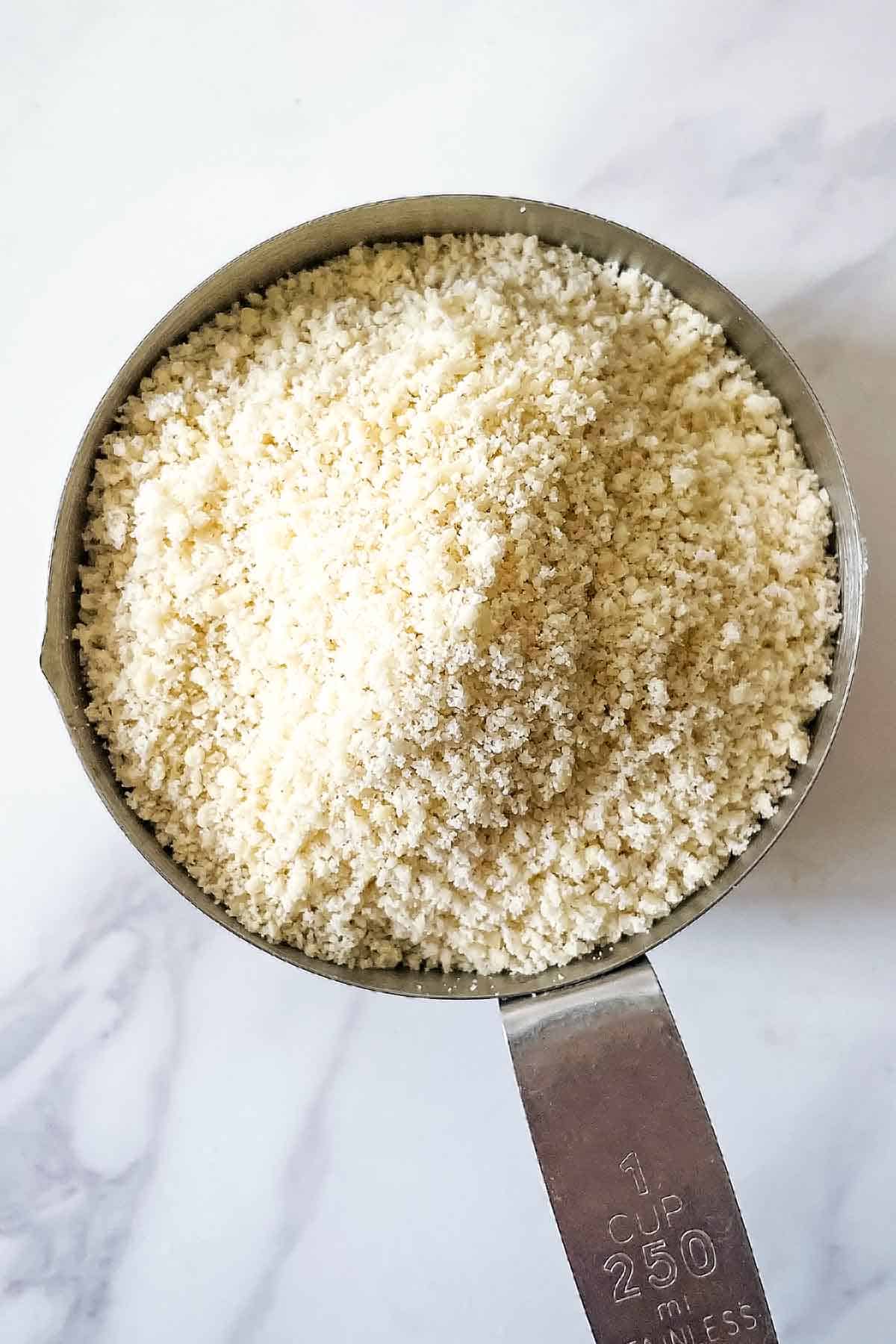
Almond flour is a wonderful, high protein flour ideal for using in gluten-free and low-carb baking. It helps bind baked goods together while offering a nutty fragrance and flavor to the baked product. It is also great if you are trying to steer clear of refined flours like all-purpose flour as it has higher fiber and a lower glycemic index.
You can use almond flour in almost any baking recipe such as cookies, squares, quick breads, cakes, and muffins. While you can easily buy almond flour at the grocery store, here are five reasons you may want to make your own:
- You only need a little bit of almond flour for one recipe and don't want to stock a whole bag.
- You've run out of almond flour but you happen to have almonds at home. You can tide yourself over until the next trip to the store
- Making your own almond flour at home can be much more cost-effective.
- If you make it at home, you can ensure your almond flour is fresher than what you would buy at the store, and as a result, the flour will retain more of its nutrients.
- You can also control how finely or coarsely ground it is to meet your preference or the need of whatever recipe you are making.
Ingredients
This almond flour recipe is quite easy and only requires one ingredient.
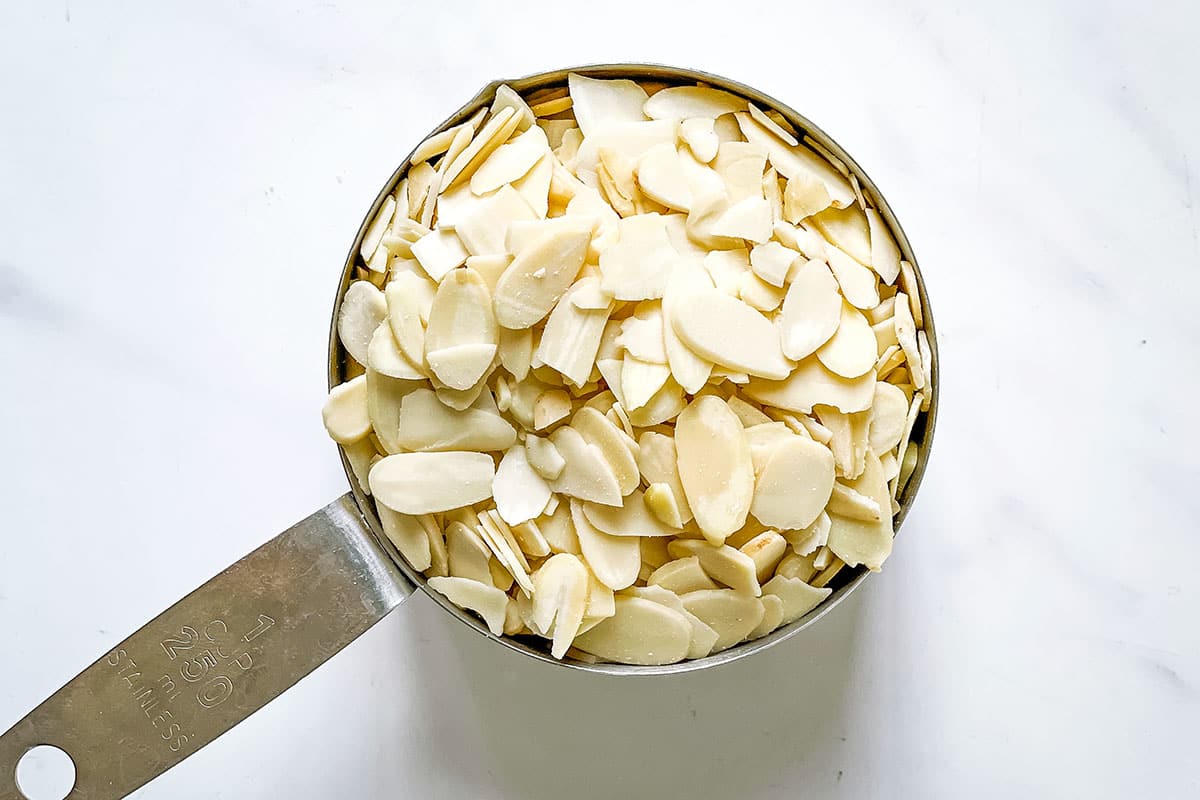
- Blanched almonds - whole, sliced, or slivered (or skin-on almonds for almond meal)
See recipe card for quantities.
Instructions
Making almond flour at home is extremely easy as long as you have a food processor or high speed blender.
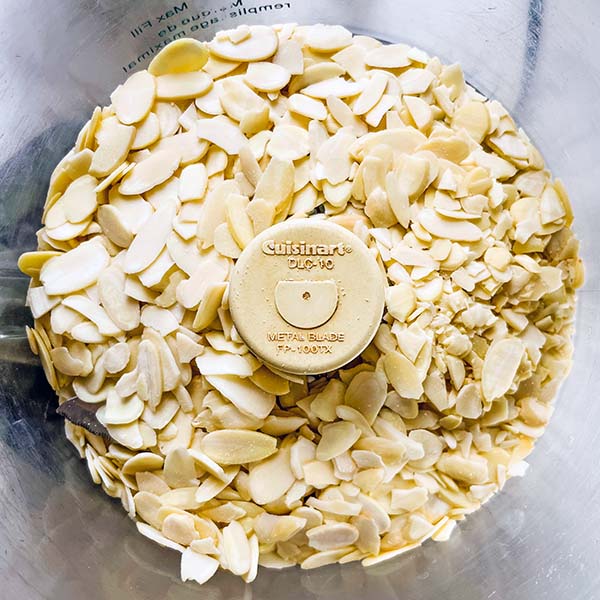
Place the almonds in a food processor and pulse them.
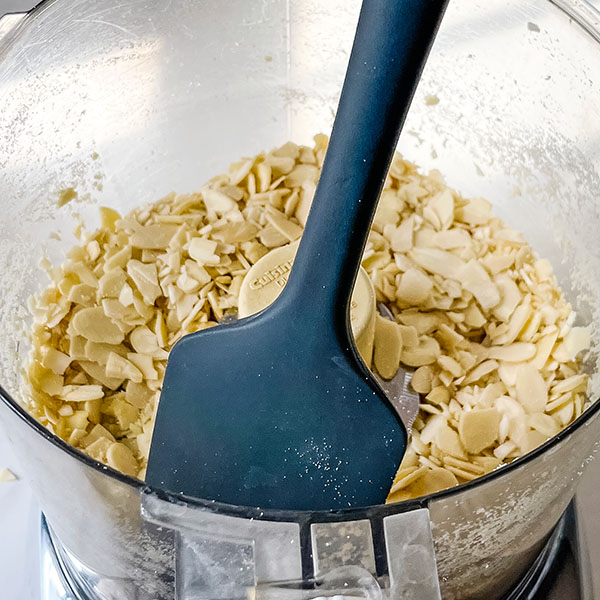
Stop every 10 pulses to scrape down the sides of the food processor bowl.
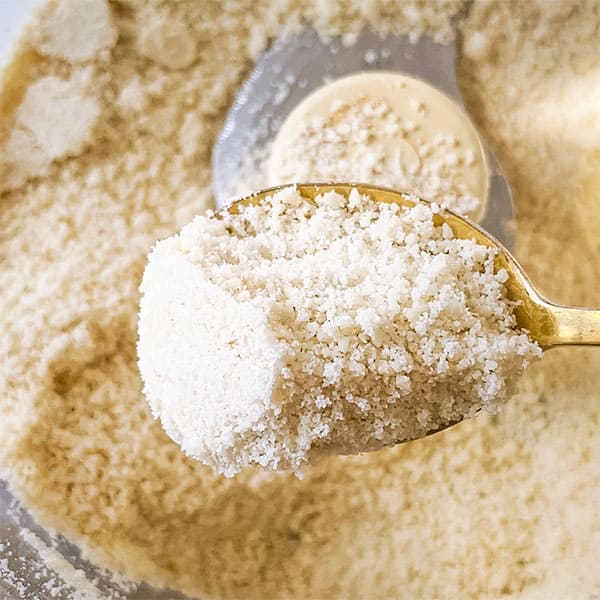
Repeat the previous steps 5 to 8 times until the almond flour texture is relatively fine.
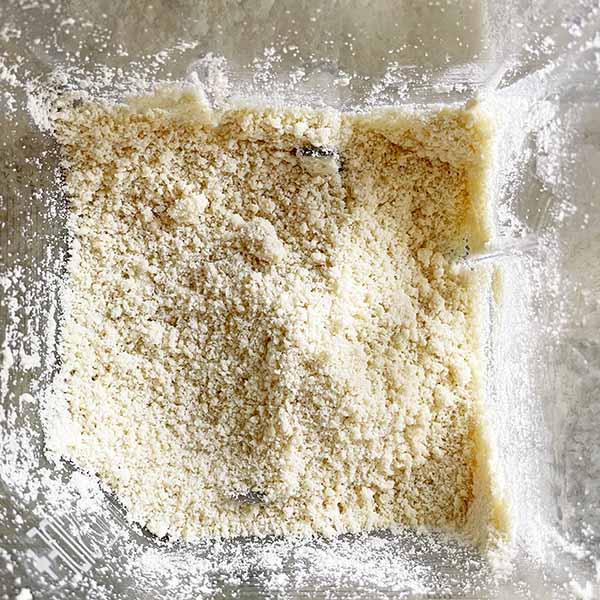
Alternatively, pulse the almonds in a high speed blender for 10 seconds. Then, stop it to scrape the sides, and repeat two to three times until the almond flour is fine.
Hint: To ensure the almonds don't turn into almond butter, make sure you stop it every few pulses or so to scrape down the sides of the food processor and prevent overheating. This will allow you to keep a close eye on the consistency of the flour as well.
Storage
Almond flour will keep very well stored in an airtight container in your pantry at room temperature. However, it is best to use it in your recipes within 3 months or so to ensure you use it while it is still fresh. If you would like to keep it for longer, you could also store it in a sealable bag in the freezer where it will keep fresh for up to 1 year.
Top tip
To ensure your almond flour has a fine consistency, feel free to sift it through a sifter to remove any chunks that didn't blend in the food processor or blender. Or to break up tight clumps that formed in the process. This is a particularly good idea if you intend to use your almond flour for a delicate baked good like macarons.
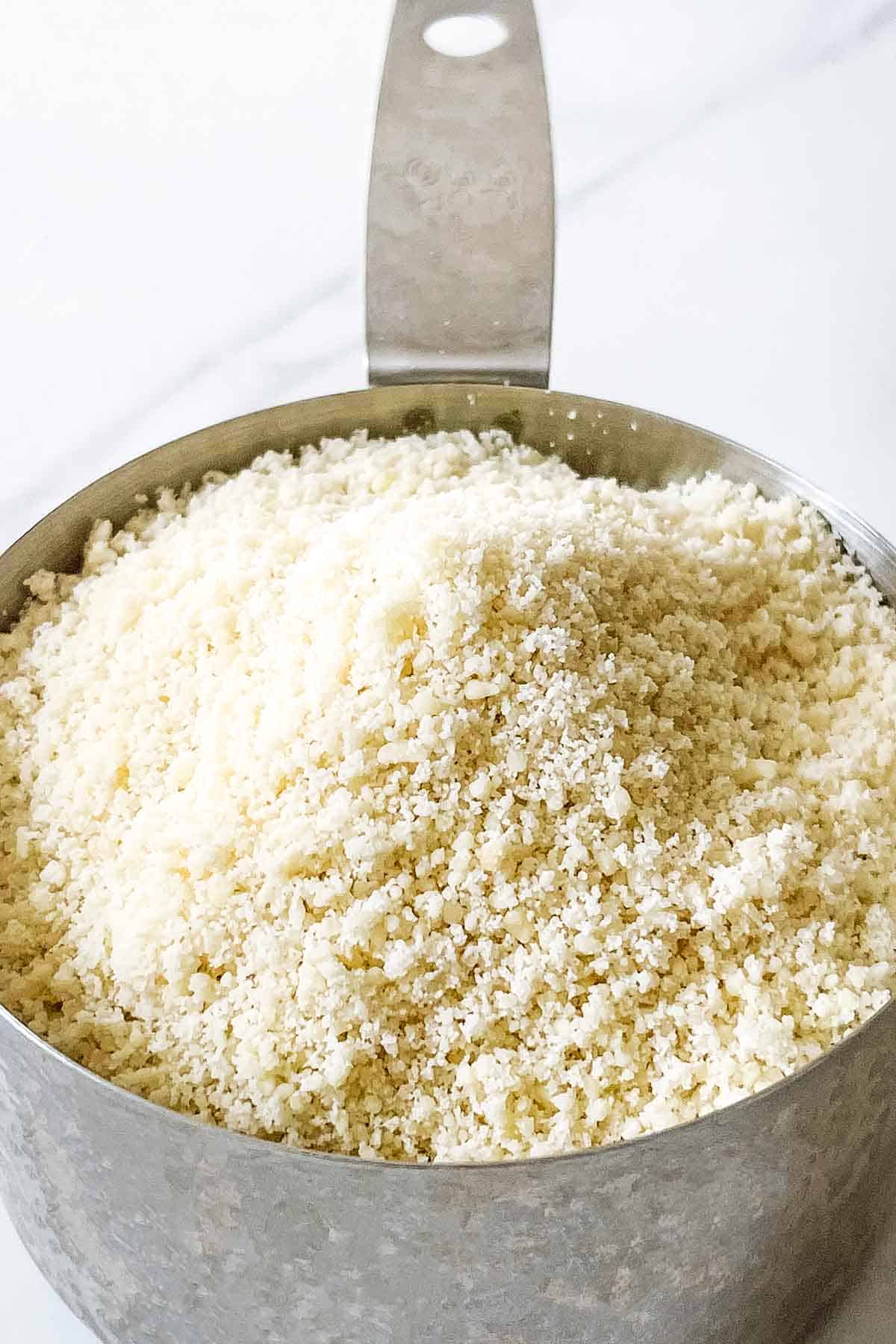
FAQ
Yes, it is simply blanched whole, sliced, or slivered almonds that have been ground into a fine consistency.
Yes, you definitely can! In fact, homemade almond flour tends to be better than store-bought because it is more affordable and you can ensure it is a fresher quality.
If you don't have almonds on hand to make almond flour, you could try making flour with other nuts instead. Nuts that are wonderful for making homemade flour are hazelnuts and cashews.
You can definitely use almond flour in baking recipes rather than all-purpose flour, but it is best to choose a recipe that has been tested with almond flour first. This is because the recipe may require a different amount of almond flour to replace the all-purpose flour and almond flour recipes often require some type of added binding agent.
Almond flour is a good choice in many baking recipes including cookies, cakes, sweet loaves, cupcakes, brownies, and muffins. Additionally, you can use it in savory recipes as breading for fish or chicken strips, or you can make items like crackers or pizza dough with it. It is also wonderful for breakfast foods like pancakes or waffles.
Roasted almonds are perfectly fine to blend into almond flour but the flavour will be different. Roasted almonds will offer a stronger almond taste to the flour whereas unroasted almonds will be more subtle in your baked goods.
Related
Looking for recipes using almond flour? Try these:
Recipe
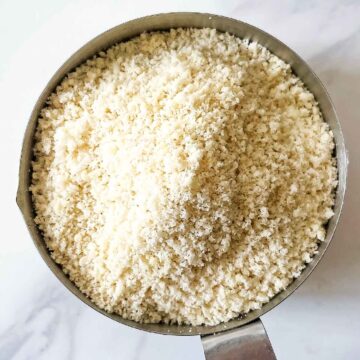
How to make Almond Flour
Equipment
- 1 Food Processor or high speed blender
Ingredients
- 1 cup blanched almonds whole, sliced, or slivered
Instructions
- Add the almonds to a food processor and pulse. Stop every 10 pulses and scrape down the sides with a spatula to prevent clumping, overheating, and turning it into almond butter accidentally. Repeat 5-8 times until relatively fine.
- Repeat 5-8 times until relatively fine. You can also sift it to remove any remaining larger chunk for extra fine almond flour.
- Alternatively, blend the almonds in a high speed blender on high for 10 seconds. Stop to scrape sides and repeat (2-3x).
- You can also use whole almonds with skin on, the result is almond meal which works just as well in most recipes.
Nutrition
Pin for later?
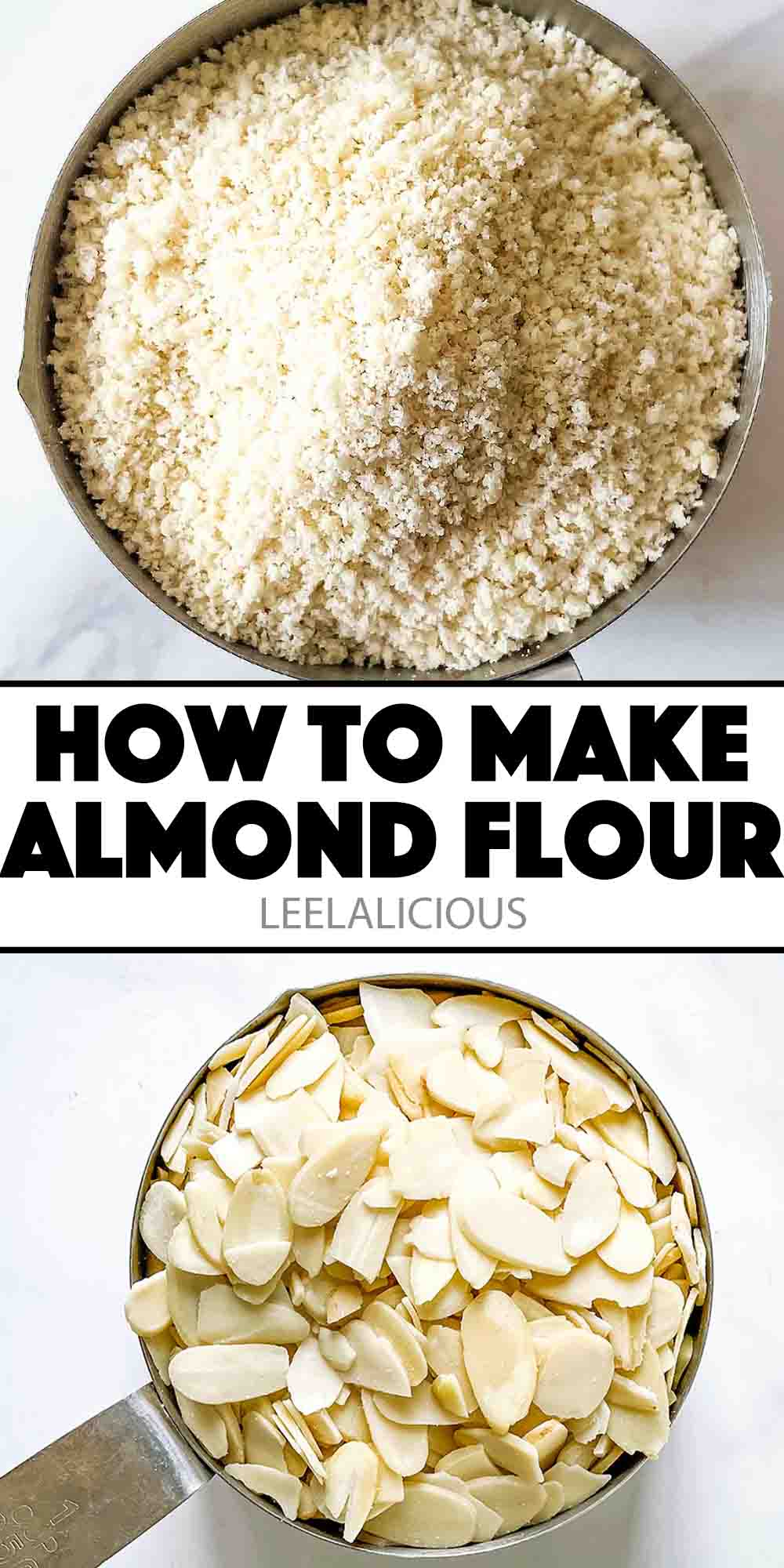


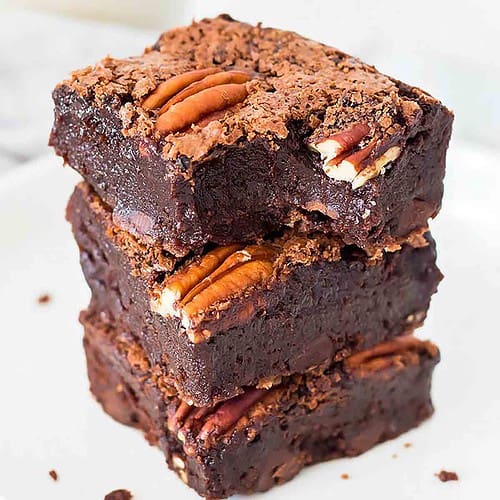

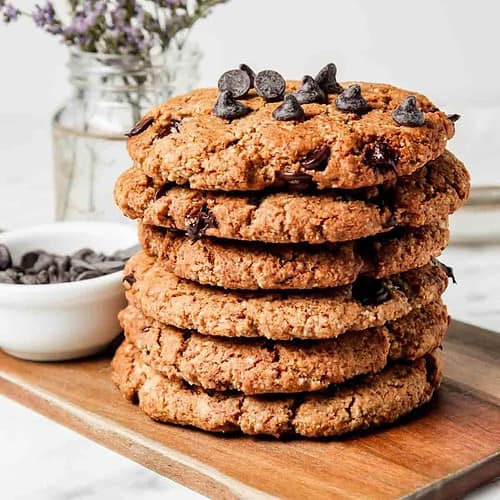

Leave a Reply